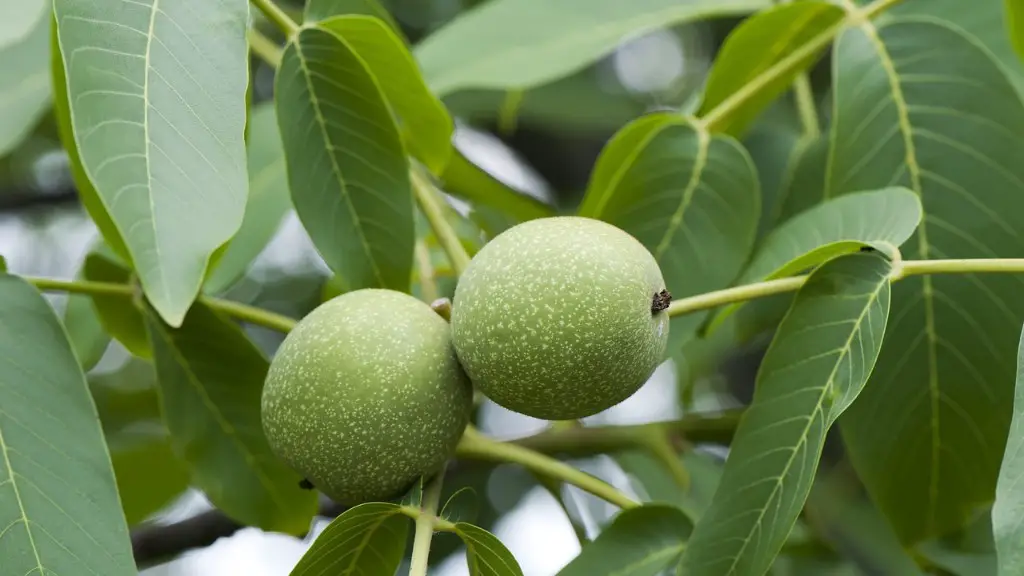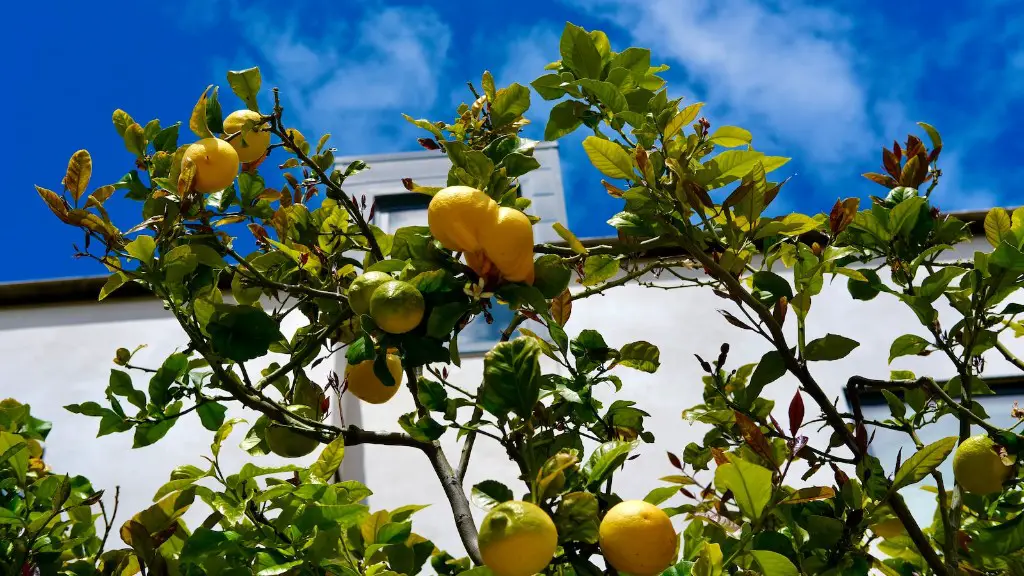Losing lemon tree leaves is a common problem, but it can be difficult to diagnose the issue. Reasons why a lemon tree can start to shed its leaves include nutrient deficiencies, pests and disease, or environmental stressors. Let’s explore the different potential causes so you can address the issue and get your lemon tree back in balance.
Firstly, deficiency in vital nutrients such as nitrogen, phosphorous, and potassium can cause the lemon tree to lose its leaves. While lemon trees may receive some nutrition from their soil, they also rely on additional fertilization throughout their life. If nutrients are lacking, the assumption is a deficiencyis the cause. The fertilizer should be provided in the right proportions of macronutrients. Regular fertilization over time can help ensure your lemon tree’s needs are being met and prevent leaf loss.
Next, pests and diseases can cause leaf shed. Common pests include mites, aphids and mealybugs, and they can damage the leaves and the tree, setting it up for more stressors. Diseases can include root fungus, dieback and canker, and can have a similar effect. Additionally, viruses can cause leaf drop, waterlogging can cause yellowing and discoloration of leaves, and even severe weather like frost can cause leaves to be lost.
Finally, environmental stressors such as lack of sunlight, too much or too little water, or extreme temperatures can cause a lemon tree to lose its leaves. These stressors create a ‘shock’ to the tree, and if left to persist, can result in leaf loss. When a tree is kept in an environment that does not match its native climate, this kind of shock is much more likely.
Nutrient Deficiencies
Nutrient deficiencies can be divided into two categories: macronutrients and micronutrients. Macronutrient deficiencies occur when a tree is lacking major nutrients, like nitrogen, phosphorous, and potassium, while micronutrient deficiencies occur when a tree is lacking minor nutrients, like zinc, sulfur, and iron. Both kinds of deficiencies can cause leaf loss, as well as yellowing and discoloration of leaves, and need to be addressed as soon as possible to avoid further damage.
When a tree is suffering from a nutrient deficiency, the best solution is to use a soil test. A soil test can determine exactly what nutrients are deficient and recommend the right fertilization to address the issue. By providing the tree with the right fertilization, the roots will be able to get the nutrients they need and the tree can start to heal.
Once a nutrient deficiency is addressed, the lemon tree should start to show signs of recovery and the leaves should return. Regular fertilization and testing of soil nutrients can prevent nutrient deficiencies and ensure your trees health and longevity.
Pests and Disease
Pest and disease damage can be difficult to diagnose, and differentiating between them is the first step. Pests often cause the discoloration,blackening, and yellowing of leaves, while diseases usually impact the foliage and then spread to the roots or the tree trunk. Additionally, viruses often cause yellowing and discoloration before resulting in leaf drop.
To treat pest and disease damage, it is important to identify the cause. This can take some sleuthing to determine the exact pest or disease, but is necessary to use the correct application of pest control or fungicides. Access to professional tree care specialists can speed the process of diagnosis, and organic treatments are available to address issues while keeping chemical use to a minimum.
Once treated, the tree should start to recover, and new leaves should appear. To prevent pests and disease, it is best to regularly inspect the tree and prune away any dead branches or leaves, as this way any damage can be dealt with quickly and efficiently.
Environmental Stressors
Environmental stressors should be considered when a tree is dropping its leaves. Issues like poor sunlight, extreme temperatures, and over or under watering can all contribute to the shock that causes leaf shedding. Additionally, when a tree is kept in a climate not native to its environment, it can weaken the tree’s defense system and make it more likely to experience shock.
When addressing environmental stressors, the main goal is to ensure the conditions in which the tree is kept are compatible with its needs. If a tree is not getting enough sunlight, take steps to increase it. If the soil is too dry or too wet, adjust irrigation accordingly. To minimize the effects of extreme temperatures, provide enough mulch or shade to protect the roots. Additionally, move any trees that are in a non-native environment to a climate that better suits its needs.
Remember, correcting environmental stressors is not an immediate fix, but when done correctly, should result in recovery over time. If done in conjunction with other treatments, it can speed up the process of healing and get the tree back into shape.
Fertilization
Fertilization is key when it comes to addressing leaf loss in a lemon tree. As mentioned before, nutrient deficiencies can cause leaf shedding, and regular fertilization over time can help ensure your lemon tree’s needs are being met and prevent leaf loss. Additionally, because fertilizer adds essential nutrients to the soil, it can improve the overall health of the tree and bring it back into balance.
When fertilizing a lemon tree, it is important to use a fertilizer with a balanced ratio of macronutrients. To maximize the effects of fertilization, it is also helpful to incorporate soil additives such as compost, vermiculite, and humus into the soil. These soil additives can improve the soil retention of nutrients, increasing the fertilizer’s effectiveness.
Fertilization should be done in the early morning or in the evening, as the tree’s pores are open and the fertilizer can be taken in more effectively. After application, water the tree as this will help the fertilizer sink into the soil and prevent root burn. Finally, repeat the process every few months to keep the tree’s soil in balance and its health in check.
Pest Control
When dealing with pests and diseases, controlling the spread of the pests is the first step. This can be achieved by pruning away the affected branches and leaves and disposing of them correctly. Additionally, you can use organic pest control solutions such as neem oil or diatomaceous earth to eliminate the pests, or use pest control solutions provided by a tree care specialist.
Once the pests have been taken care of, it is important to take further steps to prevent them from coming back. This can include using sticky traps or screens around the tree to keep pests away,or using beneficial insects such as ladybugs and lacewings to naturally combat pests. Additionally, don’t forget to regularly inspect the tree and remove any dead branches or leaves to stop any spread of pests or disease.
Tree Care
It is best to approach the problems of leaf loss in a lemon tree holistically so that all the possible causes can be addressed and the tree can start to recover. Along with diagnosing the cause of leaf loss, proper tree care is essential to get the tree back in balance. This includes regular pruning to remove dead branches and leaves, water and sun management, mulching to protect the root system, and of course, regular inspections and fertilization.
Finally, it’s important to remember that a lemon tree may take some time to fully recover from leaf drop. With the right treatments, the leaves should return and the tree should start to heal and thrive. After the treatment has finished, keep up the preventative measures and you can ensure that your lemon tree continues to flourish for years to come.





